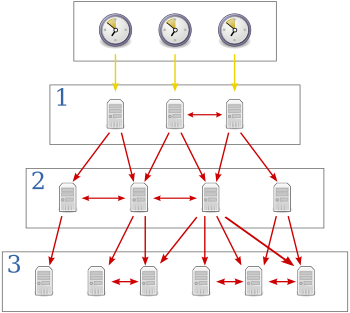Stratum Levels & NTP Explained | Welcome to the ‘Stratumopshere’
An in-depth insight into stratum levels and their connection with Network Time Protocol (NTP).
What is a stratum?
In terms of NTP, a stratum is simply one layer in a hierarchical network of layers that distribute accurate time across a network of devices.
Stratum Levels & NTP
Network Time Protocol is a tiered protocol and split into layers (stratums), which determine the distance from the ‘reference clock’.
The reference clock is the device that sits atop the stratum hierarchy and is typically a cesium atomic clock or a Global Positioning System (GPS), which have atomic clocks built into them.
In the world of NTP, reference clocks are known as stratum 0 servers. They distribute Coordinated Universal Time (UTC) to other devices across a network. All devices receiving time from a stratum 0 server are referred to as ‘clients’.
Reference clocks have very little or no time delay. Furthermore, stratum 0 servers cannot be implemented across a network, instead, they are attached directly to a computer, which then serve as the ‘principal’ time server.
Devices connected directly to a reference clock are commonly referred to as stratum 1 servers. Across a network, it’s the stratum 1 time server that distributes time to other devices on the network.
Those devices receiving the time package from stratum 1 time servers are referred to as stratum 2 devices and this sequence continues, down to stratum level 16, which is the lowest of all stratum levels.

Although NTP can handle a maximum of 16 stratum levels, the further down the chain you descend, the less precise devices become.
But, to combat inaccuracies, and to make the stratum system more dependable, each client can acquire time from multiple servers.
Additionally, stratum 2 devices and below can be coordinated with each other. Stratum 1 devices can also be peered, for instance, Galleon’s NTS 6001 devices.
The major benefit of NTP software is that it relentlessly tracks the consistency and precision of all NTP time servers and selects the server with the most accuracy.
Networks & Stratum Levels
The stratum chain is predominantly used across large computer networks. This is because blitzing a solitary stratum 1 time server with multiple NTP requests, from hundreds of machines, will result in system overload or simply block the network.
The outcome of such a scenario is that computers, routers and any other devices connected to the network will frequently be waiting for time synchronisation requests to be processed.